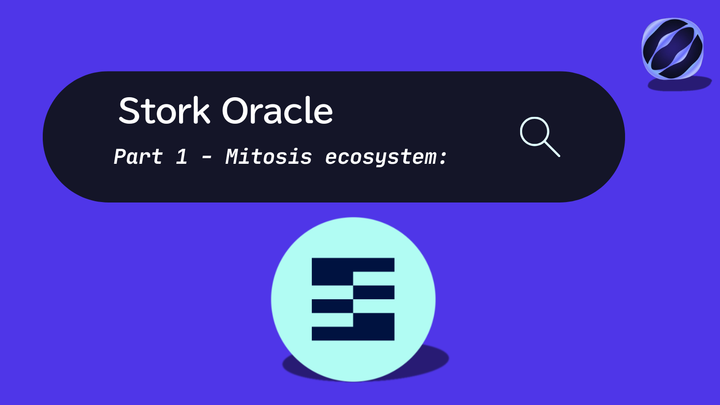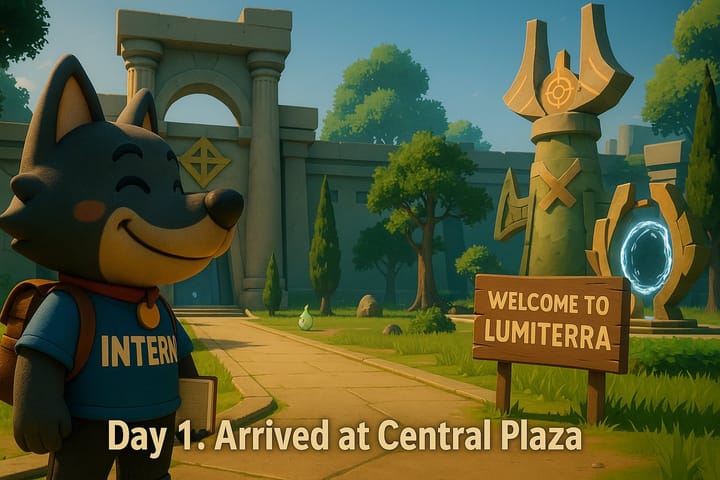The Dual Engines of Flow: Unpacking miAssets and maAssets in the Mitosis Ecosystem
Overview: Tokenizing Liquidity for a Seamless Multi-Chain Future
The rapid expansion of the decentralized finance (DeFi) landscape has brought forth a myriad of blockchain networks, each with its unique strengths and specialized applications. While this diversity fosters innovation, it has also led to a significant challenge: liquidity fragmentation. Capital is often siloed across disparate chains, hindering efficiency and creating a disjointed experience for participants. This article will explore the innovative Mitosis protocol and, specifically, its foundational tokenized liquidity positions: miAssets and maAssets. We will dissect how these assets function as the core mechanism for enabling seamless cross-chain asset mobility, aggregating Ecosystem-Owned Liquidity (EOL), and redefining the future of decentralized finance through concepts like programmable liquidity.
Introduction: The Imperative for Unified Liquidity in DeFi
The vision of(https://example.com/defi-explained) has always been to create a global, open, and permissionless financial system. However, as the ecosystem matured, the proliferation of numerous Layer 1s and Layer 2s, each with its own liquidity pools, inadvertently led to a fragmented landscape. This meant that capital was often trapped within specific blockchain silos, limiting its utility and creating inefficiencies.
The challenge became clear: how to enable assets to flow freely across this multi-chain environment without compromising security or decentralization. The answer lies in a new generation of infrastructure, with the Mitosis protocol emerging as a key player, offering a novel approach to unify this scattered liquidity.
Mitosis Protocol: Redefining the Liquidity Experience
Mitosis is a pioneering Layer 1 blockchain specifically designed to serve as a dedicated liquidity layer for the entire Web3 space. Its core mission is to address the pervasive problem of liquidity fragmentation by creating a unified, omni-chain liquidity solution.
Mitosis aims to redefine the liquidity provision experience for both DeFi projects and individual liquidity providers, making cross-chain liquidity more attractive and efficient. This is achieved through its unique Ecosystem-Owned Liquidity (EOL) model, which pools capital from individual providers under a decentralized governance structure.
Ecosystem-Owned Liquidity (EOL): The Power of Collective Capital
At the heart of the Mitosis protocol's approach is the innovative concept of Ecosystem-Owned Liquidity (EOL). Unlike traditional models that rely on transient incentives, EOL seeks to create a sustainable, community-managed pool of capital accessible across diverse blockchain environments.
This model pools liquidity from individual providers under a(https://docs.mitosis.org/concepts/mitosis-dao). This allows individual users to collectively provide institutional-level liquidity, enhancing their bargaining power and benefiting from economies of scale. The goal is to move away from "mercenary capital" towards a more aligned and stable liquidity base.
The Mitosis Vault System: Aggregating Global Liquidity
Central to the Mitosis protocol is the innovative Mitosis Vault system. These vaults serve as the primary conduits through which users contribute assets to the shared liquidity pool managed by the protocol. By depositing assets into a Mitosis Vault on a specific chain (e.g., Ethereum, Linea, Arbitrum, Scroll, BSC, Blast, Mode, Morph, Mantle, OP Mainnet, Manta), users become liquidity providers within the Mitosis ecosystem. This system is designed to be intuitive and accessible, abstracting away much of the underlying complexity of cross-chain operations for the end-user.
miAssets and maAssets: The Engines of Interoperability
Upon depositing assets into a Mitosis Vault, users receive miAssets and maAssets. These are canonical, 1:1 receipt tokens that represent the deposited assets within the Mitosis ecosystem (e.g., depositing weETH yields miweETH).
The creation and fungibility of miAssets and maAssets are critical steps in enabling seamless cross-chain liquidity. They are the key innovation in Mitosis's tokenization of liquidity positions into standardized assets that maintain tradability and composability. These tokenized positions enable liquidity providers to retain ownership and flexibility over their assets while still participating in yield-generating strategies.
The Role of miAssets: Accruing Value and Driving Demand
miAssets are designed to accrue value over time, primarily from cross-chain transaction fees. As more blockchain transactions span multiple networks facilitated by Mitosis, fees accumulate in the Mitosis Vaults in the format of the original assets.
Holders of miAssets see their balances grow in a rebase format without requiring active management. This mechanism creates a positive feedback loop: competitive yields drive up the demand for miAssets, which in turn increases liquidity within the Mitosis Vaults, further enhancing interoperability and leading to more cross-chain interactions.
The Role of maAssets: Tokenized Flexibility for Liquidity Providers
While the provided research does not explicitly detail a separate function for "maAssets" distinct from "miAssets," they are consistently mentioned together as standardized, tokenized liquidity positions within the Mitosis ecosystem. This suggests that both miAssets and maAssets collectively represent the tokenized form of capital contributed to the Mitosis Vaults, allowing liquidity providers to retain ownership and flexibility over their assets.
Their combined purpose is to transform static, locked assets into liquid, composable financial instruments that can be utilized across multiple DeFi applications, enhancing capital efficiency.
Programmable Liquidity: Unlocking New DeFi Frontiers
A core innovation within the Mitosis ecosystem is the concept of programmable liquidity. Through its(https://docs.mitosis.org/concepts/mitosis-dao), Mitosis can dynamically allocate and direct its pooled Ecosystem-Owned Liquidity (EOL) to specific chains, protocols, or even individual liquidity pools.
It is rational to say this transforms liquidity from a passive resource into an active, intelligent force that can be deployed precisely where it is most needed, optimizing capital efficiency and supporting the growth of emerging DeFi applications across the multi-chain landscape.
DAO Governance: Empowering Liquidity Providers
The Mitosis protocol operates under a decentralized governance model, specifically a(https://docs.mitosis.org/concepts/mitosis-dao). Holders of miAssets and maAssets are granted voting rights within this DAO, empowering them to participate in key decisions regarding the protocol's development and, crucially, the allocation and management of the pooled liquidity within the Mitosis Vaults. This community-driven approach ensures that the liquidity is directed in a manner that best serves the collective interests of the ecosystem, optimizing capital efficiency across integrated chains and fostering stability.
How does Mitosis's Ecosystem-Owned Liquidity (EOL) model fundamentally change the risk-reward profile for individual liquidity providers compared to traditional DeFi liquidity pools?
Benefits for Liquidity Providers: Multi-Chain Yields and Airdrops
Participating in Mitosis Vaults offers compelling benefits for liquidity providers. Users can earn multi-chain yields as rewards, simplifying the process of optimizing returns across different networks without manually comparing yields.
Furthermore, through campaigns like Mitosis Expeditions, users who deposit liquidity into these vaults can accumulate MITO Points, which grant them eligibility for(((https://support.bitrue.com/hc/en-001/articles/41380420224153-Mitosis-Airdrop-How-to-Earn-MITO-Points-and-Unlock-Rewards))). Mitosis's extensive network of partnerships also allows users to potentially access multiple airdrops from various protocols through a single deposit into a Mitosis vault.
Vault Creation Process: Community-Driven Expansion
The creation of new Mitosis Vaults is a community-driven process, reflecting the decentralized ethos of the protocol. Protocols interested in having a vault on the platform must first undergo discussions in the Mitosis forum. Following these forum discussions, a formal proposal for the vault is put to an initiation vote.
If the proposal receives a sufficient number of votes from miAsset and maAsset holders, the vault is officially listed and added to the Mitosis platform, making it available for users to deposit their liquidity. This ensures that the expansion of the vault system is aligned with community needs and demand.
Mitosis's Interoperability Backbone: Morse and Hyperlane
To facilitate the seamless and secure movement of miAssets and maAssets across different blockchain environments, Mitosis leverages robust and secure interoperability protocols.
Protocols like Morse and Hyperlane provide the underlying infrastructure for secure cross-chain messaging and asset transfers. This ensures that miAssets and maAssets can be reliably moved between chains without compromising security or incurring excessive costs and delays often associated with traditional, less secure bridging solutions.
Mitosis's Impact and Growth: Reshaping the DeFi Landscape
By providing a unified liquidity layer, Mitosis is actively reshaping the(https://example.com/defi-landscape-impact). It enhances market depth, reduces slippage, and improves capital efficiency across the entire multi-chain ecosystem.
Projects can attract liquidity more easily, and users can access a wider range of opportunities without the friction of fragmented capital. This approach fosters greater financial inclusion by removing barriers created by traditional intermediaries and complex cross-chain operations, making DeFi more accessible and efficient for everyone.
Future Vision: A Unified and Resilient DeFi Ecosystem
The era of liquidity fragmentation in DeFi is gradually giving way to a more interconnected and resilient future, largely thanks to innovations like the Mitosis protocol. As Mitosis continues to expand its reach across various blockchain networks and attract more Ecosystem-Owned Liquidity (EOL), the vision of a truly unified decentralized financial system becomes increasingly tangible. This seamless flow of capital will not only benefit individual users and protocols but also strengthen the entire Web3 ecosystem, making it more robust against market volatility and external shocks.
Conclusion: The Vaults System as a Cornerstone of DeFi's Future
The journey of(https://example.com/defi-explained) has been marked by incredible innovation, but also by the persistent challenge of liquidity fragmentation. Before solutions like Mitosis emerged, DeFi participants navigated a complex and often inefficient landscape of siloed capital and costly cross-chain operations. Mitosis has stepped in to fundamentally reshape this reality with its Ecosystem-Owned Liquidity (EOL) model, powered by its central Vaults system. By creating a unified, community-managed liquidity layer accessible across diverse blockchain networks, and enabling programmable liquidity through its DAO, Mitosis is paving the way for a more efficient, accessible, and resilient decentralized financial system, truly realizing the promise of a global, interconnected Web3 economy.



Comments ()